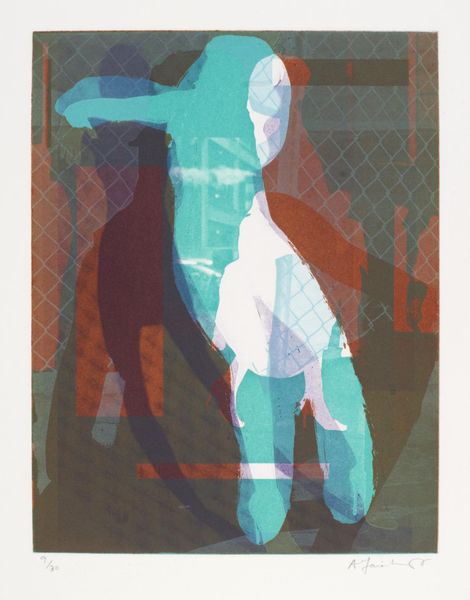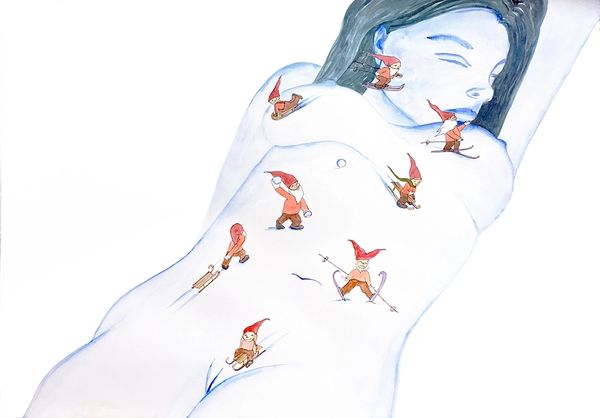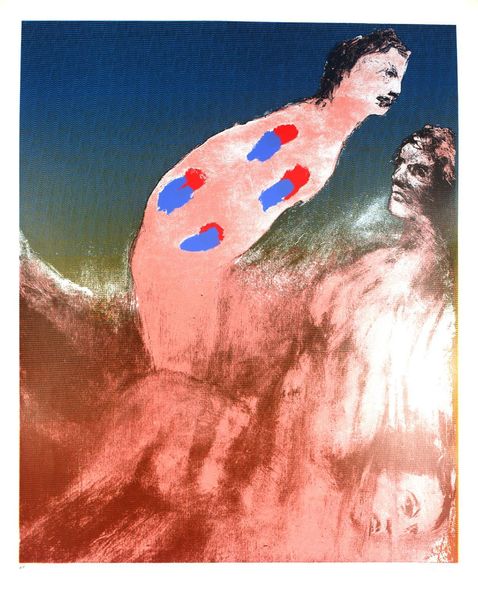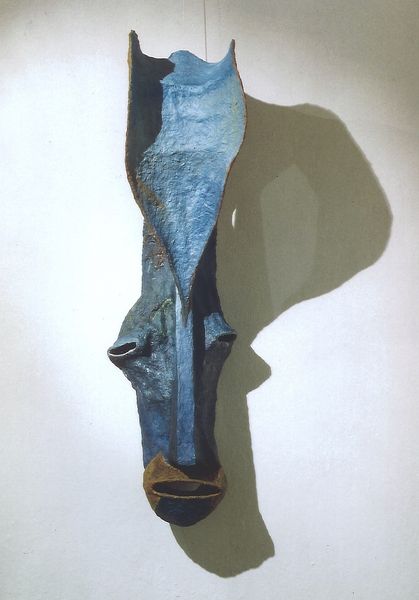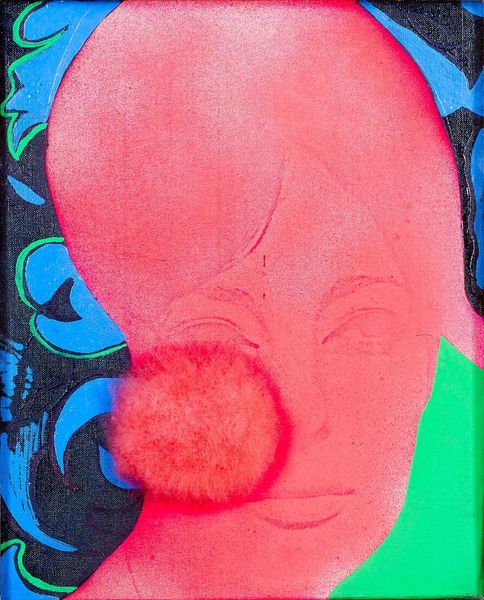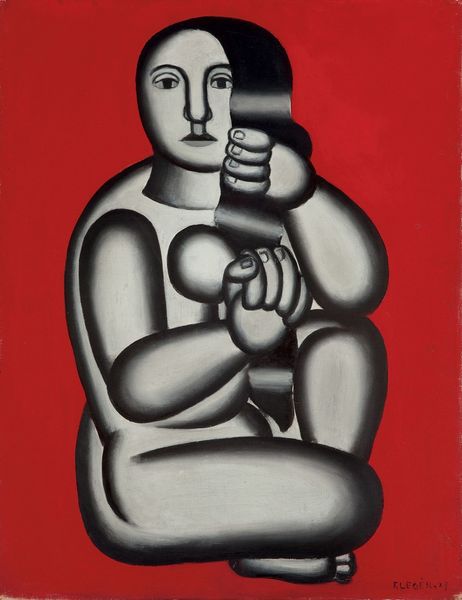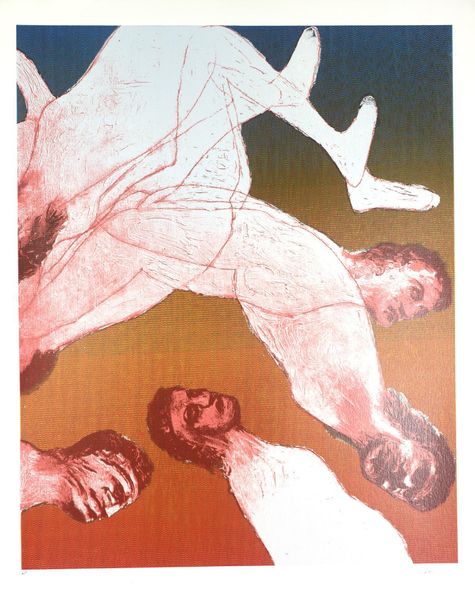
painting, acrylic-paint
#
portrait
#
contemporary
#
painting
#
acrylic-paint
#
figuration
#
modernism
Copyright: Nyoman Masriadi,Fair Use
Editor: Here we have Nyoman Masriadi’s 2003 acrylic painting, "Too Small." I'm struck by the figure's exaggerated musculature and how it contrasts with the ordinary jeans he’s holding. What do you make of this juxtaposition? Curator: It's a compelling contrast, isn’t it? Masriadi often uses hyper-masculine figures to critique social and political issues in Indonesia and global power dynamics. Consider the jeans: a global commodity, a symbol of Western culture. By presenting this powerful, yet vulnerable, figure struggling with its fit, Masriadi might be prompting us to reflect on issues of identity and the pressures of globalization, particularly how they're experienced in postcolonial contexts. Does the title "Too Small" resonate with you in this light? Editor: Definitely. The figure seems confined, not just by the jeans, but perhaps by broader societal expectations. Is it fair to say that the artwork serves as a commentary on cultural expectations of men? Curator: Exactly! Masriadi consistently challenged patriarchal notions. We might interpret the painting as a metaphor for the constricting expectations placed on men – the pressure to conform to an ideal that doesn't quite fit. It highlights the performativity of gender. Notice the cartoonish exaggeration in style. Do you think this contributes to this message, and how? Editor: The exaggerated physique, coupled with the slightly absurd situation, does create a satirical effect. It's like he's mocking the very idea of the hyper-masculine ideal, while also exposing its limitations. Curator: Precisely. Through this artwork, Masriadi creates a dialogue about identity, power, and the lingering effects of colonialism, all within a seemingly simple scenario. Hopefully now when you return to the work, your perspective will include a more detailed contextualisation of his place in Indonesian and Global cultural discourse. Editor: That's really insightful. I’ll never look at a pair of jeans the same way again! Curator: Me neither! This new interpretation gives voice to these issues and broadens our collective vision of social constructs in South East Asia.
Comments
No comments
Be the first to comment and join the conversation on the ultimate creative platform.
